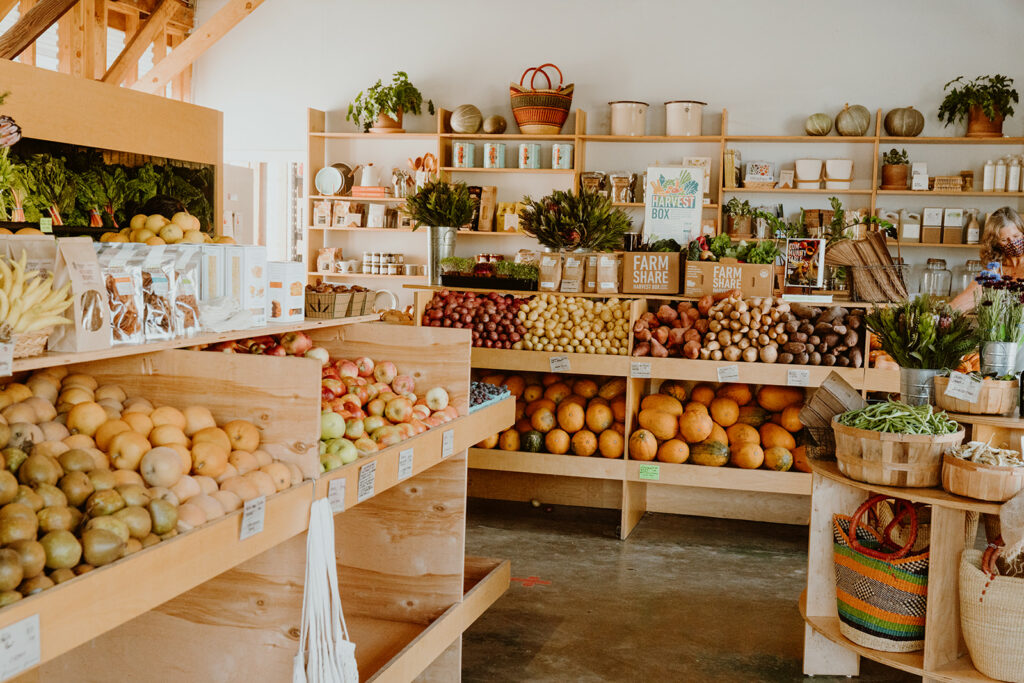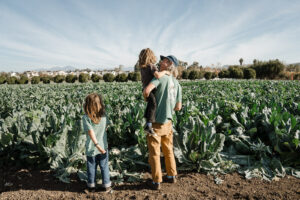The journey of our “stuff” begins long before it arrives in our homes. The final product is a result of many processes: harvesting, processing, dyeing, building, mixing, printing, shipping, etc. At every step of the way is the potential for environmental degradation, pollution, human rights issues, health risks, and more.
It is difficult to feel connected to the true cost of making an item and throwing it away, especially when that item is cheap. Let’s use fast fashion as an example. Cotton (used in almost half of all textiles) is responsible for a quarter of worldwide insecticide application and polyester is produced using petroleum. Both materials are associated with harmful conditions for workers and chemical runoff. And it’s not just the types of materials we are using, but the sheer quantity of them.
If every human consumed the resources of an average American, the Earth would only be able to sustain 1.4 billion people. As disheartening as this may seem, we are major contributors to the problem, we are both responsible for and capable of generating a solution.
Buy less
Of course, the most effective way to reduce waste, environmental destruction and pollution (not to mention, save money!) is to simply buy less. Even the most sustainable, locally sourced, fair trade item loses out when faced with the alternative of not buying anything at all. Although we are grateful for the opportunity to purchase these more ethical products at a time of need, the reality is that if we don’t need it, we shouldn’t buy it at all.
In a time when someone’s success is judged largely by the amount and quality of their “stuff”, this is a radical cultural shift. However, it can arise naturally if we simply evaluate our needs. Do we need the newest version of something we already own? Can we retrofit or repair something we have?
- Avoiding single-use items is a huge step in the right direction. A significant portion of our impact stems from normalization of disposability. Upon sweeping the Pacific Ocean, scientists recently found six times more plastic than plankton. Cut out water bottles, plastic ware, non-reusable bags, and excess packaging and switch to reusable alternatives.
- Borrow or share it! If there is something you only need a few times (a tool, a book, something for a special event) reach out to your community. Public spaces already provide lending systems like libraries, bike/ride shares, community gardens, and more.
Shop smart
Technology has made it easier and faster to the consumer. However, it has also given us the responsibility of using our access to information to make more thoughtful choices. Realistically, the purchase of a single sustainable product won’t make much of a dent in the overall scheme of the world’s material consumption. However, the importance of the act is undeniable.
- Use your hard-earned money to support companies that make sustainable choices. Choose vendors that adopt the slower, more complicated, or more expensive path in order to create a quality, ethical product. By being thoughtful shoppers, we have the power to demand sustainable alternatives in the marketplace.
- Always examine the packaging of a product, notice material listings, and manufacturer location. Certain third-party certifications have corresponding labels to help you understand the conditions the goods were produced under. A few examples are Fair Trade Certification, Certified Organic, BPA-free, Energy Star and Rainforest Alliance.
- Look for materials that are biodegradable, recyclable, or made from recycled products. Choose items that are safer and healthier for your homes, and consider the effects of disposal products.
- Support local artisans, craftspeople, and farmers. By stimulating the local economy, you ensure that your money is being reinvested in small business owners that cultivate relationships and build a strong community.
Waste less
An extremely significant and often ignored component of consumerism happens after the product has left our possession. Waste. Landfills are out of sight, out of mind, so it is easy to lose track of the significant way in which we are altering our planet.
Each year, the average American throws away roughly 68 pounds of clothing. We need to approach that number from both sides — the input and the output. First, as discussed above, we need to simply consume mindfully. Second, we need to explore alternative avenues for our things once we are finished with them.
Second-hand stores, thrift stores, and consignment stores are excellent options both for buying and disposing of products you no longer use. Donate your clothes, household items, electronics, furniture and more to organizations dedicated to distributing them to people in need. Swap clothes with family members and friends to keep things fresh while giving your wallet and the environment a break. Up-cycle something you no longer use into something you need.
Cradle to cradle
Despite the hold consumerism has on us, innovation shines through. A sustainable future demands that we shift patterns to live within our means, but it does not negate growth. It simply requires smart growth.
Designers worldwide now discuss creating projects where the impact is deeply understood from “Cradle to Cradle”. In brief, this means that products are designed in closed cycles that mimic those of natural systems. Instead of a product’s life ending at a landfill, the cycle is continuous and regenerative. This way of thinking has inspired everything from eternally recyclable carpet to intricate planning for cities with urban farms for rooftops and self-sustainable energy sources.
As stewards of our own spaces, we must be conscious that every decision we make has an effect on the health of our ecosystems and ourselves. By voting for quality over quantity, by acting as informed consumers and demanding smarter products, we are all advocates for a sustainable tomorrow. And in this, we will find a greater connection to ourselves, our communities, and the things we call our own.
This is an excerpt from our publication Evolve 10, published Fall 2014.








